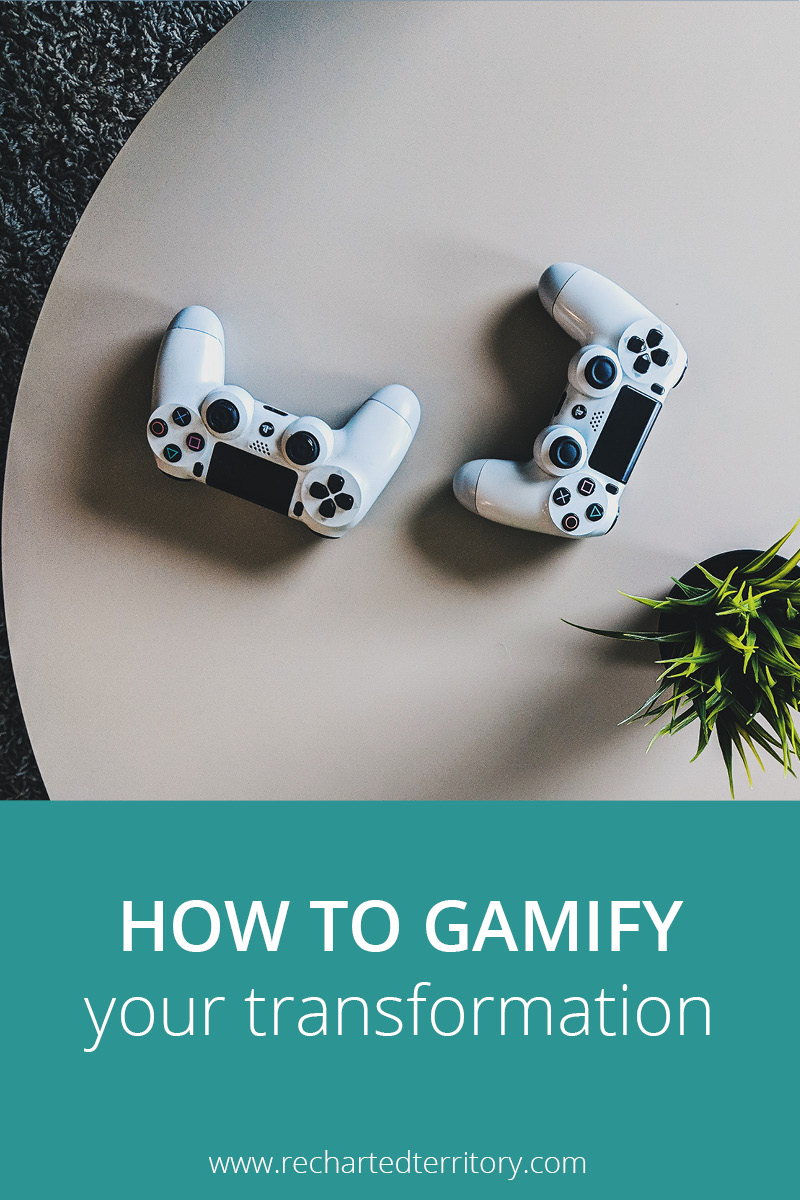

As a leader, you have a vision for change. You know what you want to create in the world.
But can’t do it all by yourself. So you need to inspire other people to take action.
But what if they aren’t? Even if they’re paid members of the team?
In contrast, what makes people spend their time off work playing games? Mastering each level and mentoring others for free?
Let’s capture some of the magic of games to motivate people to engage in our change initiatives.
The Octalysis Framework
In his book, “Actionable Gamification,” Yu-Kai Chou shares a framework for thinking about motivation and game design. Because simply adding elements of popular games like points, badges, and avatars doesn’t always make the experience more fun and engaging.
Rather than thinking about the typical game elements you could add, Chou suggests starting with how you want people to feel. Then choosing elements to evoke those feelings.
In the book, Chou shares his Octalysis framework, which breaks down gamification into eight core drives that you can focus on to design experiences that motivate and engage people.
Along the way, he also provides actionable game techniques, which I’ve modified in this post for the context of enterprise change.
Because game designers are like change leaders, competing for the attention and time of people who have many other choices.
How can we encourage people to embark on the journey with us, stick through the onboarding phase, turn into leaders themselves, and stay motivated through the entire process?
Core Drive #1: Epic meaning and calling
What it is
“The Core Drive that is in play when a person believes that they are doing something greater than themselves and/or were ‘chosen’ to take that action.”
– Yu-Kai Chou
How to apply it
- Clarify your vision and how it leads to betterness instead of just business.
- Foster a team identity.
- Help people see how their unique skills contribute to the broader purpose of the change.
Core Drive #2: Development & Achievement
What it is
“Our internal drive for making progress, developing skills, achieving mastery, and eventually overcoming challenges.”
– Yu-Kai Chou
How to apply it
- Organize the transformation into levels of mastery, with new skills required at each level.
- Highlight the progress that individuals and the team have made.
- Create leaderboards that motivate the next actions. For example, highlight metrics across the initiative to show teams how they relate to each other, especially the teams right ahead and behind.
- Encourage team members to share lessons learned and accomplishments with others.
- Talk up the special skills of team members to others. Make them feel like rock stars.
- Measure impact and improvement over time.
Core Drive #3: Empowerment of Creativity & Feedback
What it is
“When users are engaged in a creative process where they repeatedly figure new things out and try different combinations. People not only need ways to express their creativity, but they need to see the results of their creativity, receive feedback, and adjust in turn.”
– Yu-Kai Chou
How to apply it
- Define smaller challenges and give the team some tools to resolve them. Reveal new challenges and tools after they achieve each one.
- Allow people to choose different paths to the same outcome (whether those are choices from a handful of options or complete freedom over the strategy).
Core Drive #4: Ownership & Possession
What it is
“Where users are motivated because they feel like they own or control something. When a person feels ownership over something, they innately want to increase and improve what they own.”
– Yu-Kai Chou
How to apply it
- Let people design components of the change. But provide some “quick-start” templates if they seem to be stuck.
- Make your transformation metrics visible and ask people to monitor them. When we monitor the state of something, we typically want it to improve.
- Highlight what’s already in place vs. what could be to encourage people to “complete the set.”
- Let people exchange resources among themselves to achieve the broader goal.
- Pay attention to opportunities to personalize the experience for stakeholders and their needs.
Core Drive #5: Social Influence & Relatedness
What it is
“Social Influence & Relatedness incorporates all the social elements that motivate people, including: mentorship, social acceptance, social feedback, companionship, and even competition and envy.”
– Yu-Kai Chou
How to apply it
- Establish mentors on your team.
- Give the team “quests” or mini-challenges that require them to work together.
- Leverage positive social norms to motivate people. For example, say “most of the other teams are making changes” instead of “very few teams are performing at the level we need.” We tend to subconsciously go along with group norms.
- Set up “water coolers” for people to share ideas and bond.
Core Drive #6: Scarcity & Impatience
What it is
“Wanting something simply because it is extremely rare, exclusive, or immediately unattainable.”
– Yu-Kai Chou
How to apply it
- Reveal information slowly over time as people get comfortable with what’s already in place.
- Preview what the future could like once they have the requisite skills or have made the investment.
- Set limits to encourage people to act. For example, ask people to find up to three ways they can help with the translation vs. asking for unlimited support.
Core Drive # 7: Unpredictability & Curiosity
What it is
“Constantly being engaged because you don’t know what is going to happen next.”
– Yu-Kai Chou
How to apply it
- Mix up the content of your meetings and only reveal all of the details to people who attend.
- Don’t be completely prescriptive about how the change needs to occur, but highlight the next step so they feel like they’re uncovering the path along the way.
- Randomly interject new tools, techniques, resources, or rewards.
- Highlight the success of one area of your portfolio each month.
Core Drive #8: Loss & Avoidance
What it is
“Motivation to avoid something negative from happening.”
– Yu-Kai Chou
How to apply it
- Give everyone a component of the change to “own” and take care of.
- When opportunities arise, highlight them and communicate if and when the window is closing.
- Turn the desired behaviors into habits.
- Appeal to the fear of missing out.
- Appeal to the sunk cost prison if it makes sense, but couple it with a meaningful cause (ex. “think of how far we’ve come”).
White Hat vs. Black Hat Gamification
Chou refers to the first three core drives as “White Hat Gamification” and the last three as “Black Hat.”
White Hat techniques make the user feel powerful and fulfilled, while Black Hat options tend to rely on fear and ultimately can make the user feel anxious and addicted.
The downside of White Hat techniques is that they do not create as strong a sense of urgency. Which your change initiative will likely need while it’s competing with other Black Hat product designs and urgent fires the team is fighting.
It’s best to use Black Hat techniques sparingly and with the intention of motivating people toward good behaviors that they already want to do but lack the willpower for. For example, setting deadlines for accomplishing desired actions or mixing up the format and content of meetings to keep them interesting.
Black Hat techniques can be helpful in small bursts, as long as you focus on White Hat techniques for the majority of the time, especially before and after you apply the Black Hat technique.
If motivation seems low, evaluate how you’re doing across all eight of the core drives. Pick one to focus on for the next week and see how your team responds.
What other insights did you pull from this book? How will you gamify your transformation?